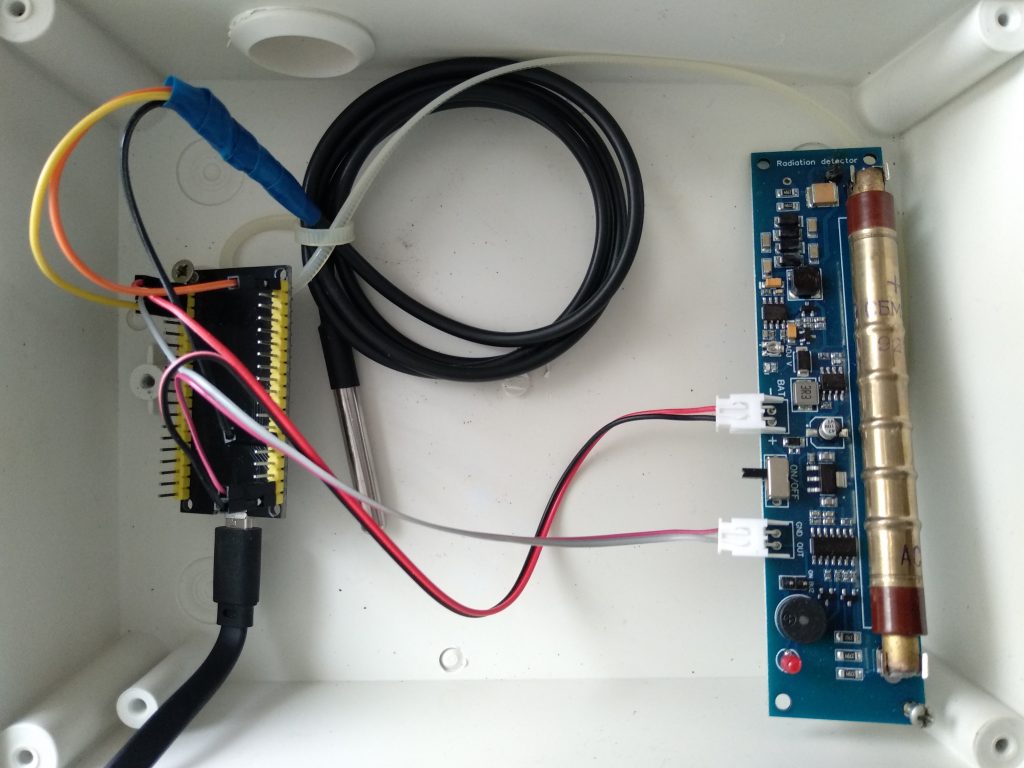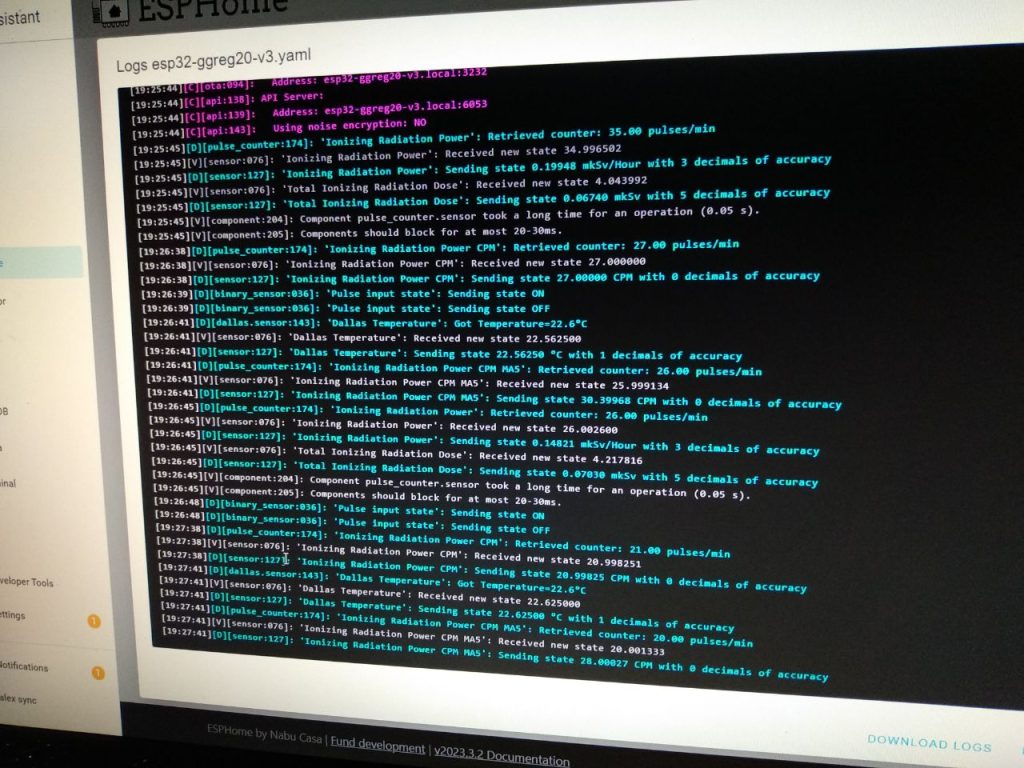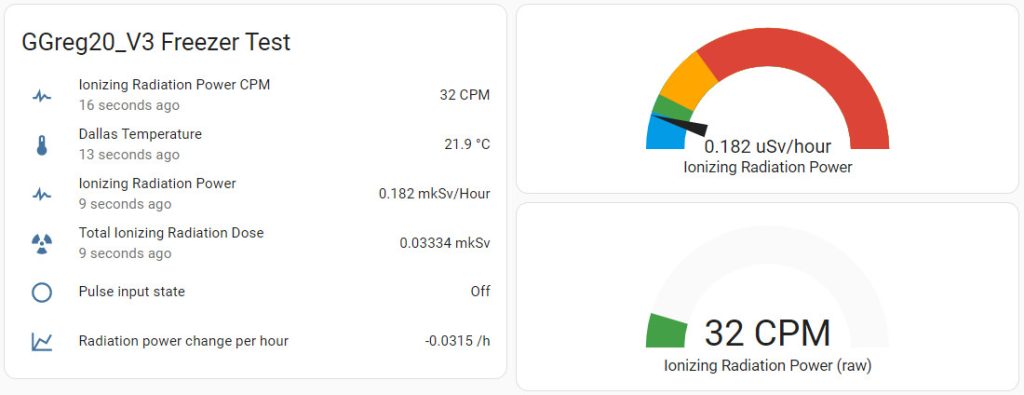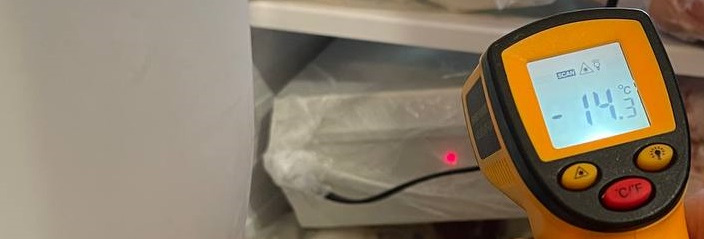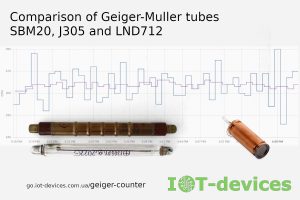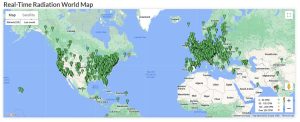
We wondered what would happen if we took our DIY Geiger counter module GGreg20_V3 and put it in a freezer with a target temperature of -23 Celsius together with the ESP32 controller.
Will our sensor work at such a low temperature? Will we see any failures or deviations in the radiation sensor measurements?
My colleagues and I were betting that sooner or later we would get False-Positive pulses at the ESP32 input during strong cooling.
The fact is that when it comes to such a modular system, it may contain several points of failure that can show up during operation at low temperatures. Before starting the test, we considered the following as possible points of failure:
- the Geiger counter module board,
- the ESP32 controller board,
- the connections between them,
- and the Geiger-Muller tube SBM20.
Each of these components could stop working or become unstable due to deformation of materials, changes in the conductivity of wires and contacts, or the formation of dew or ice on the surface of the electronics.
Although the Geiger-Muller tube has an appropriate temperature rating (-60°C to +70°C) from the manufacturer, it can also change its behavior when exposed to low temperatures. For example, loss of pulse generation capability due to slowing down of molecular/electronic processes due to a decrease in the energy of particles in the gases filling the tube, or, conversely, avalanche-like ionization inside the flask due to the thermodynamic characteristics of these gases (Ne+Br2+Ar).
For this reason, it was interesting and important to conduct such a test of the GGreg20_V3 module and the circuit with the ESP32 controller that they create in DIY projects to answer potential questions from our users and customers who plan to use the GGreg20_V3 Geiger counter in harsh weather conditions.
We kept the sensor at such low temperatures for several hours. At the same time, we recorded measurements from the sensor by the Home Assistant server wirelessly and observed the measurement graphs.
And…. And we are satisfied with this test, but let’s not get ahead of ourselves and tell you how everything happened step by step.
So, in this experiment, we aimed to investigate the performance of a DIY Geiger counter module at low temperatures. We placed the Geiger counter module and ESP32 controller in a freezer with a temperature of -23 Celsius and kept it there for 5 hours. We recorded measurements from the sensor and observed the measurement graphs to evaluate any failures or deviations in the radiation sensor measurements.
We were also able to measure the temperature of the sensor during the test because we had a temperature probe on hand (1-wire DS18b20 12-bit). However, we also monitored the external temperature of the module box several times during the test using a non-contact infrared thermometer
Results
We did not notice any failure or deviation in the radiation sensor measurements during the entire test period. The measurements from the sensor remained within the normal background radiation during the entire test period.
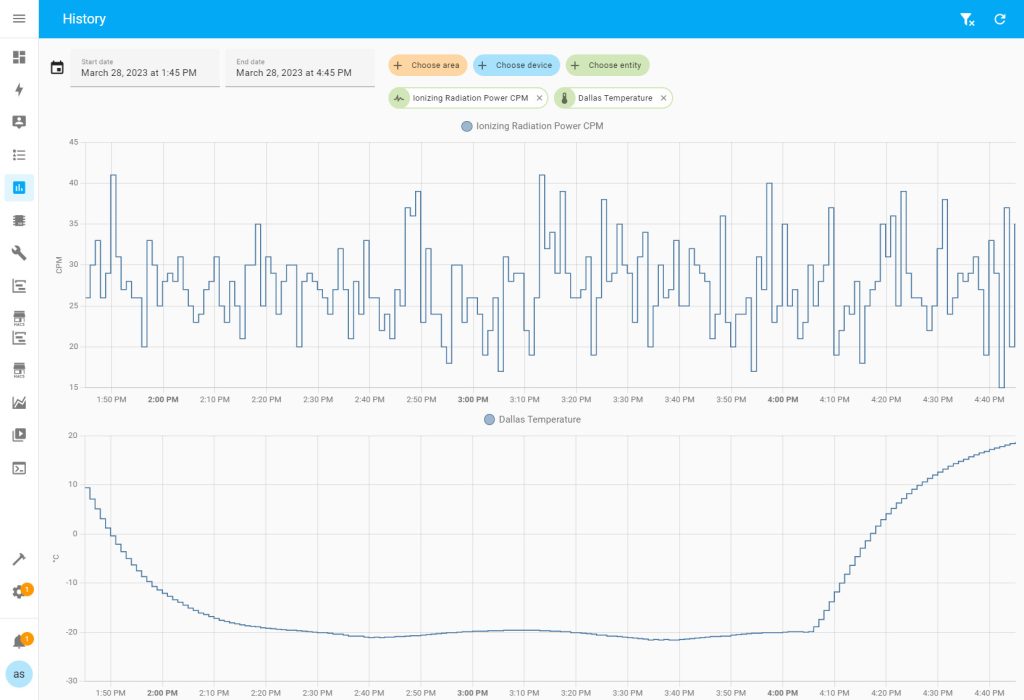
We also used these practical tests to check how the system would behave during the transition from warmth to deep cold, as well as from the cold of the freezer to normal room conditions, and found that there were no problems that could be detected by simple monitoring tools. The absolute value of the temperature drop (sharp decrease and increase) during the test was more than forty degrees.
Discussion
Our results suggest that the GGreg20_V3 radiation sensor is capable of performing reliably at low temperatures. This is an important finding as it implies that the sensor can be used in low-temperature environments without any significant loss of accuracy or reliability.
However, it is worth noting that our experiment was limited in scope, and further tests may be required to confirm the findings.
In particular, we did not do any statistical verification of the obtained data, but only conducted several long-term (up to six hours long) experiments and practically checked whether the sensor and the microcontroller would work normally.
Conclusions
In conclusion, our experiment showed that the GGreg20_V3 radiation sensor can perform reliably at low temperatures. We did not observe any failures or deviations in the radiation sensor measurements during the entire test period, indicating that the sensor can be used in low-temperature environments without any significant loss of accuracy or reliability. However, further tests may be required to confirm these findings and evaluate the performance of the sensor over an extended period.
Now you also know what happens if the Geiger counter GGreg20_V3 is placed in a low temperature environment.
We hope that you found this post as interesting and useful as the experiment we conducted.
